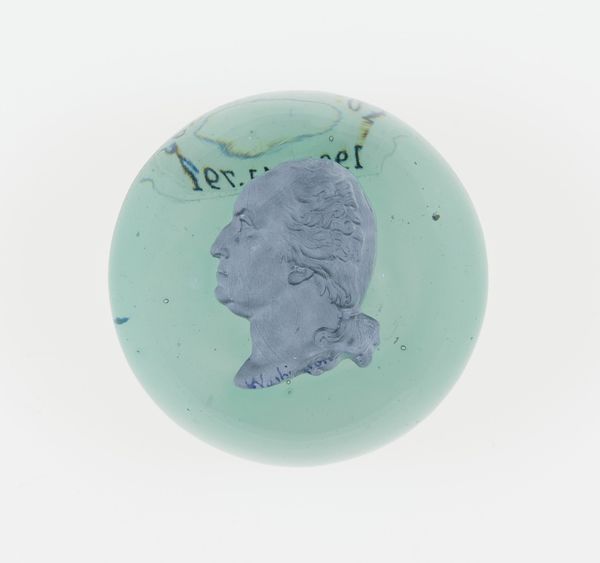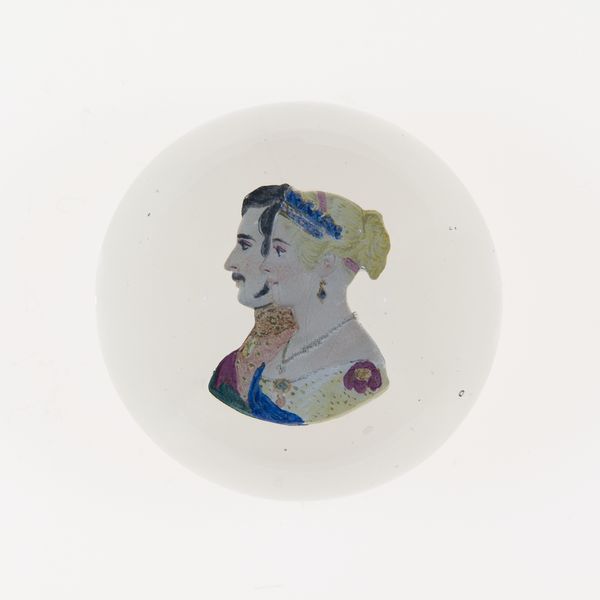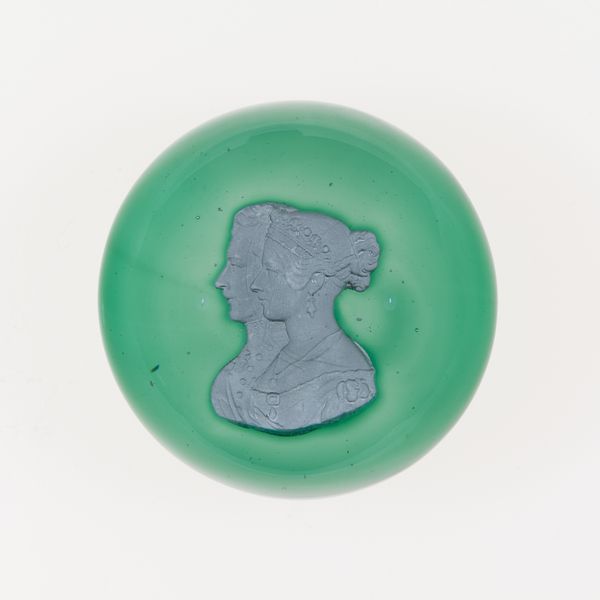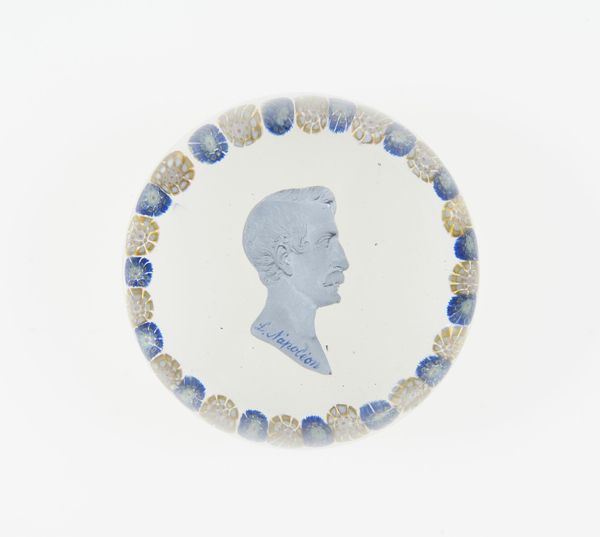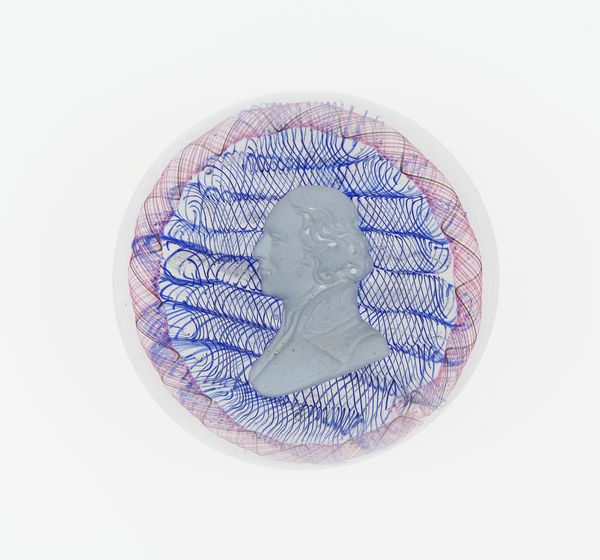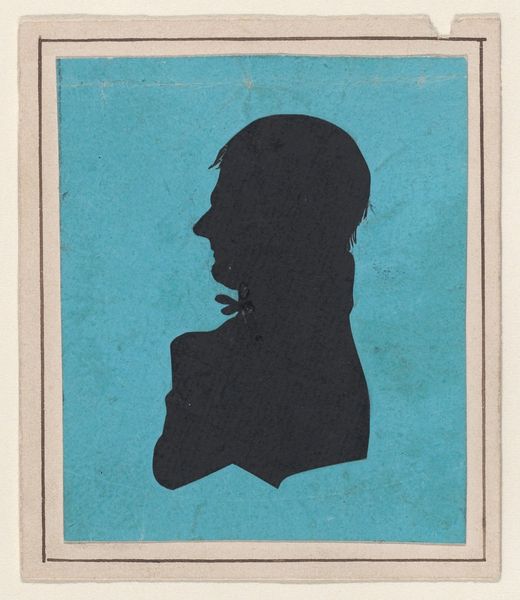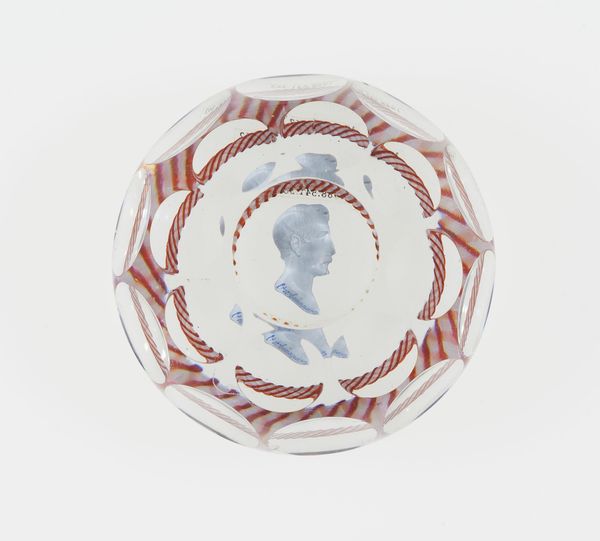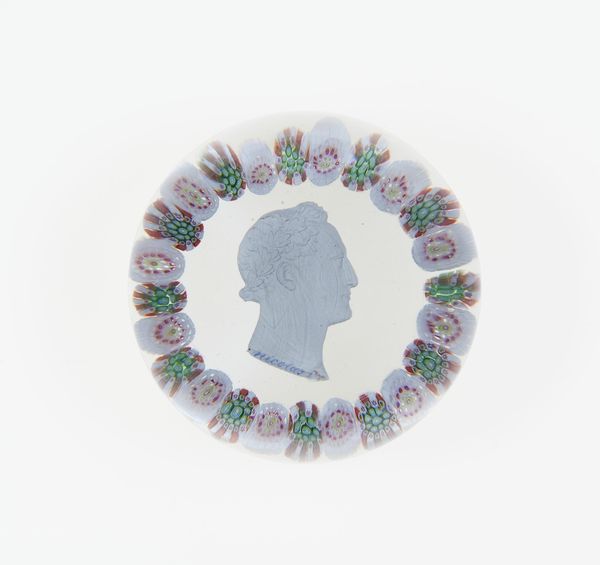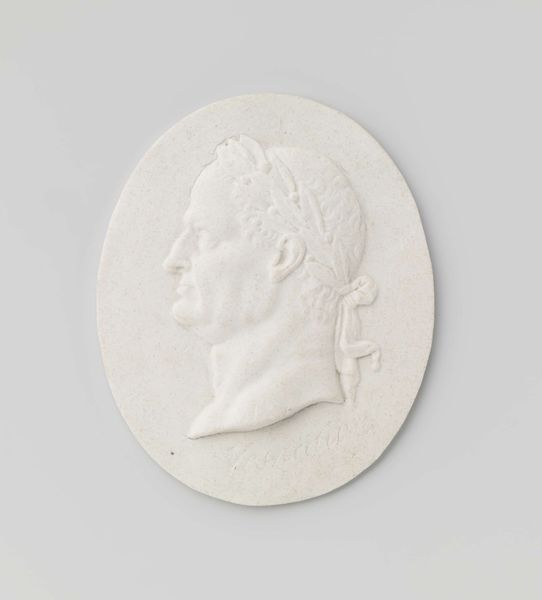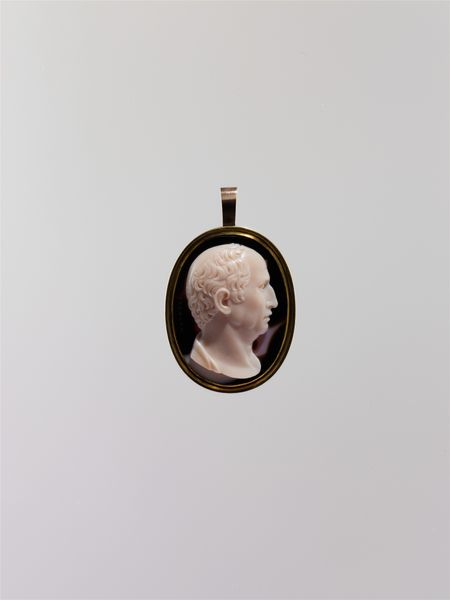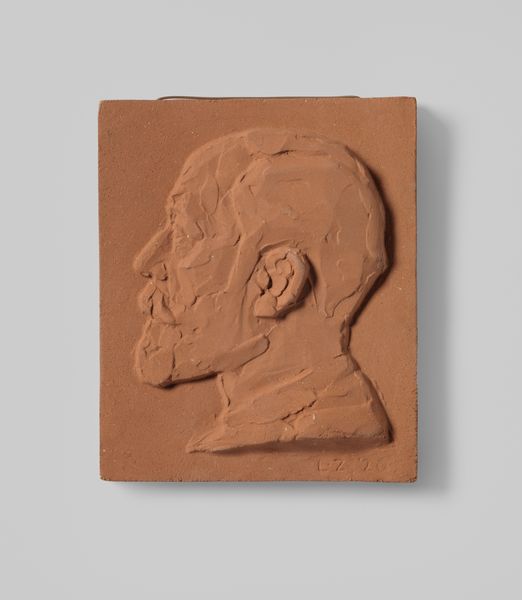
glass, sculpture
#
portrait
#
glass
#
sculpture
#
decorative-art
Dimensions: Diam. 6 cm (2 3/8 in.)
Copyright: Public Domain
This paperweight was made at the Clichy Glasshouse in France sometime between 1837 and 1885, encapsulating a cameo-like portrait in clear crystal glass. The process involved highly skilled glassmakers, who were masters of controlling molten material. It’s likely that the portrait itself was prefabricated, perhaps in ceramic, and then carefully positioned before the glass was cast around it. The clear glass acts like a lens, magnifying the portrait within. This was an elaborate, multi-stage process, requiring a division of labor. Paperweights such as these were luxury goods, meant to convey refinement, and were sought-after objects for the burgeoning middle class. Though small in scale, this object embodies both artistic skill and industrial production. It collapses the distinction between craft and design, and reflects the changing social landscape of 19th-century Europe.
Comments
No comments
Be the first to comment and join the conversation on the ultimate creative platform.
